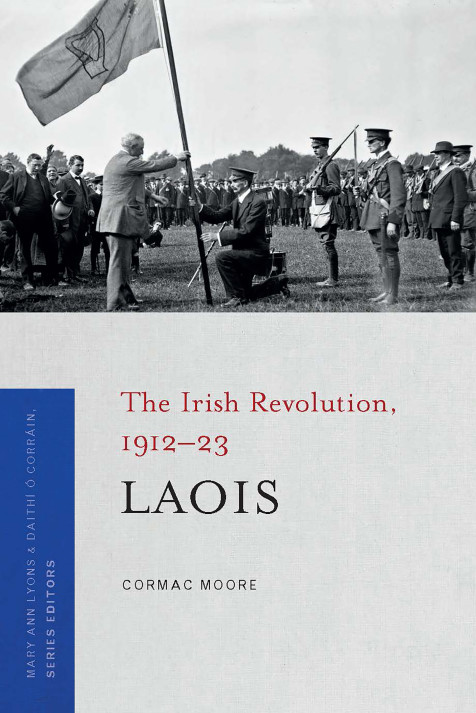Laois
The Irish Revolution, 1912-23
Cormac Moore
The turbulent period from 1912 to 1923 had a profound impact on
Laois – politically, economically and socially. The land question
became prominent in Laois from the late nineteenth century onward
and remained so throughout the Irish Revolution. Cormac Moore
explores how Laois experienced seismic national events – the third
home rule crisis, the First World War, the 1916 Easter Rising,
the War of Independence and the Civil War.
Moving beyond an examination of the Irish Revolution solely
through the prism of political violence, this study assesses how the
separatist movement created a counter-state in Laois by taking control
of local government and initiating republican courts. Given the
county’s central location, Laois’s extensive transport network played
a pivotal role in both curtailing the movement of the Crown forces
and as a means of gathering intelligence. Boycotting was deployed
extensively in Laois against members of the Royal Irish Constabulary
and traders who conducted business with Belfast-based firms. It was
also used against local loyalists, sometimes due to land disputes rather
than for political reasons, and this practice intensified during the
truce period and the Civil War. Notably, Laois experienced far
more bloodshed during the Civil War than during the War of
Independence and the reasons for this are explored.
This book provides a comprehensive account of how the Irish
Revolution affected all sections of society in Laois and how its effects
reverberated for years thereafter.
Cormac Moore, a Laois native, has a PhD from De Montfort
University, Leicester, and is an historian-in-residence with Dublin
City Council. A columnist with the Irish News, he edits its ‘On This
Day’ segment.


